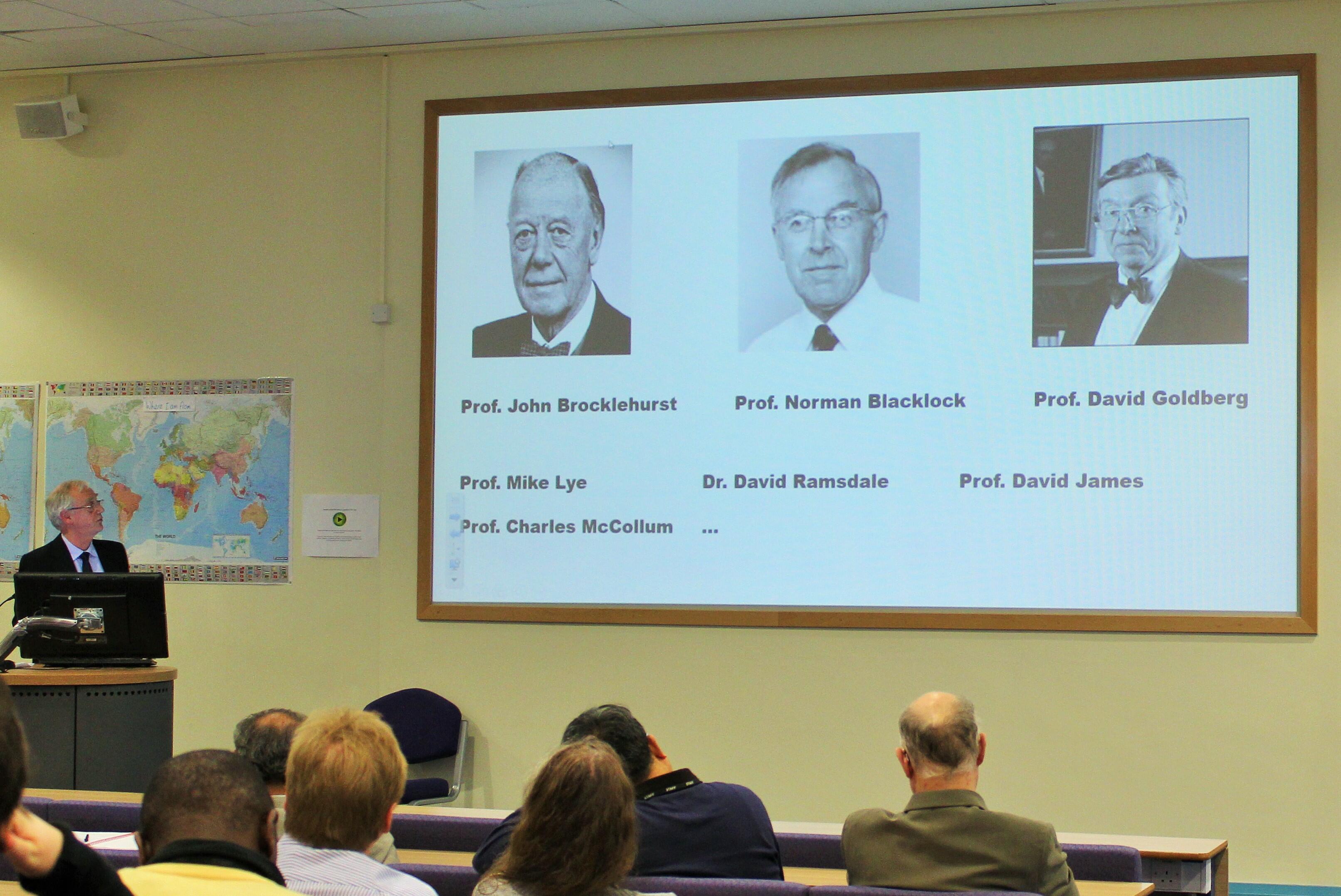
This week saw a plenary lecture by LSTM’s Brian Faragher, Professor of Medical Statistics. Awarded his chair last year, Professor Faragher’s lecture, entitled: An Assessment of the whole piece form a small random sample was attended by staff as well as an invited audience of his family and previous colleagues. The lecture was introduced by LSTM’s Director, Professor Janet Hemingway who said: “It is my great pleasure to introduce Brian, and a great recognition of the chair that he is able to deliver this talk. Prior to his appointment 11 years ago, there was not enough statistical support, but Brian’s approachable attitude has allowed statistics to coalesce within LSTM.”
Professor Faragher dedicated his talk to his father and began his lecture by reflecting on the changes that he has seen over his career and what had brought him into the field of medical statistics in the first place. He was keen to begin by acknowledging the fact that he has arrived at where he is today by, in his words, “standing on the shoulders of giants”, those people who had inspired and supported him throughout his career.
Arriving at Liverpool University from the Isle of Man in September in 1967, he described the four events that determined both his life and career, including attending a nuclear physics lecture which was his first encounter with “random”, the introductory statistics course, meeting Professor Michael Sampford as well as his wife. Following his studies he completed an MSc at Aberystwyth, the University of Central Wales, and while his Professor tried to get him to stay on and complete a PhD, he moved instead to work at Shell Agricultural Research Centre in Kent, which he says was in no small part due to the prospect of having access to the mainframe computer at Shell Centre in London.
After five years in industry Professor Faragher was a secondary school teacher briefly, before moving into academia and the NHS when he was appointed as medical statistician at the Christie Hospital in Manchester. He was almost immediately seconded to Withington Hospital to set up a Research Support Unit in the University Research Building, which eventually moved to Manchester Medical School. He began his PhD in 1986 and remained in Manchester until taking up a position at LSTM in 2004.
After giving special thanks to those he had worked with at LSTM, Professor Faragher looked to the future of study design and the increasing use of software in statistical methods and what that might mean in terms of the practice of medical statistics. He then provided a snapshot of the present situation in his field, presenting a short essay on structural equation modelling before giving special thanks to the three most important “giants” in his life, his wife and two daughters.